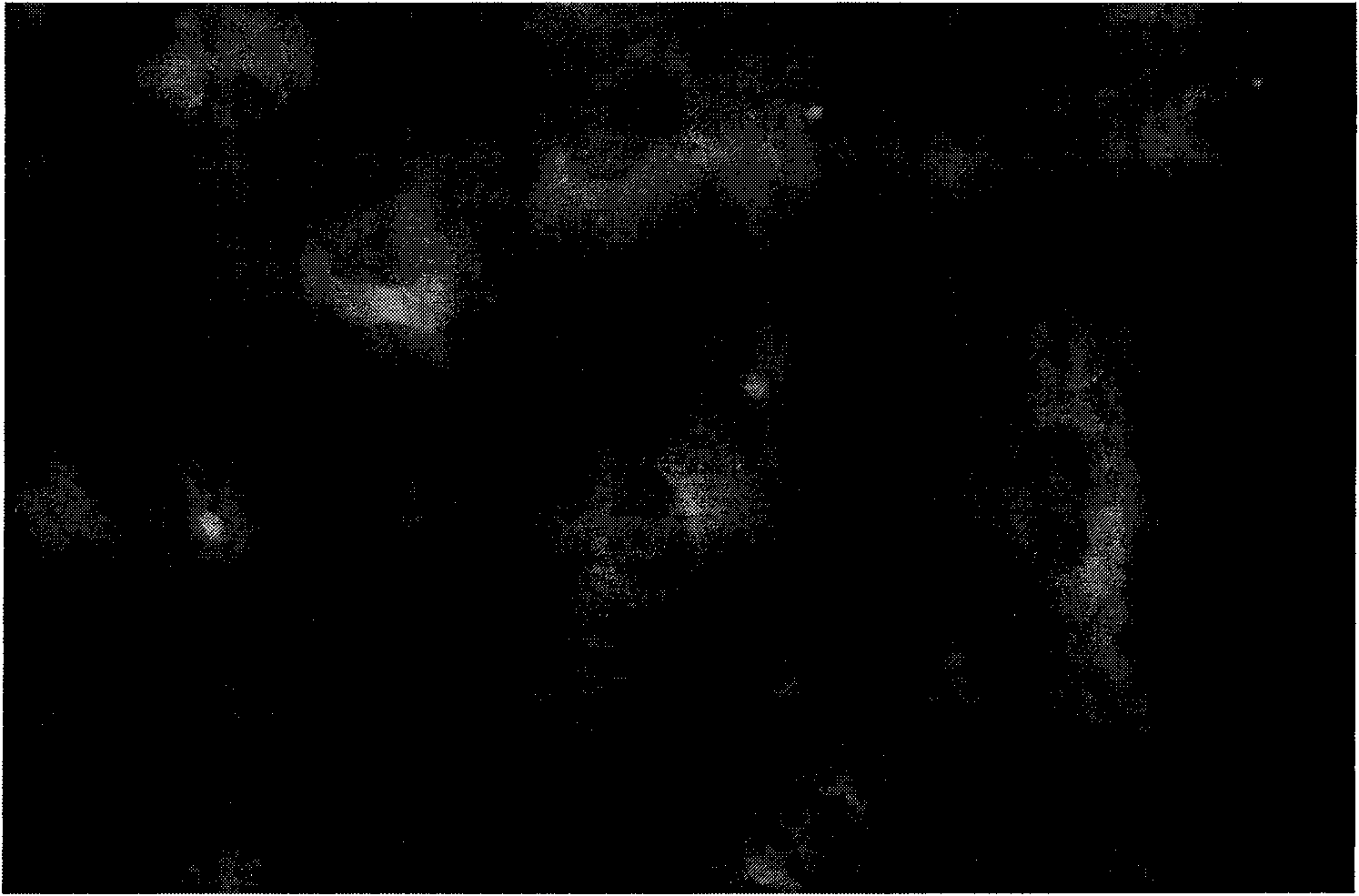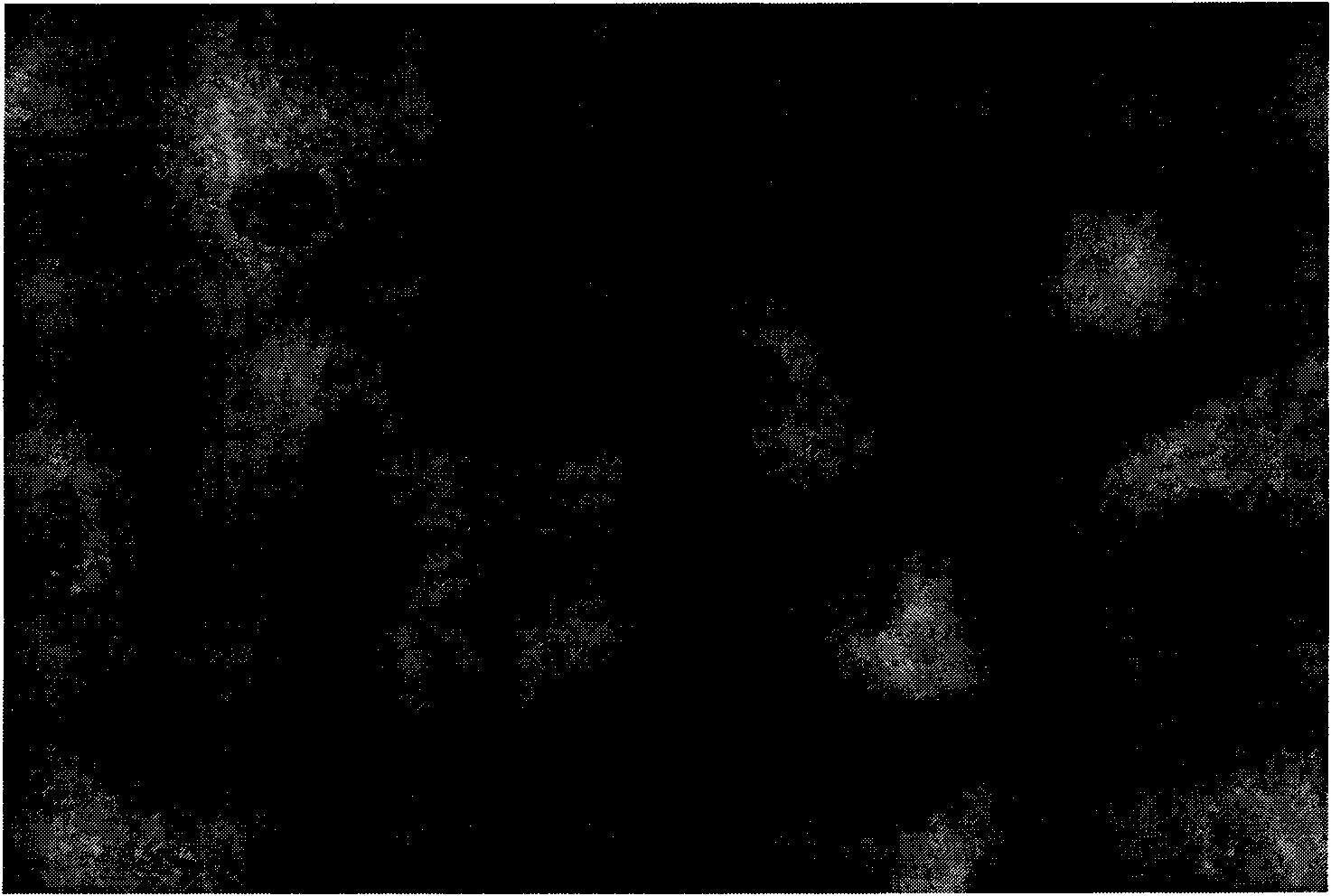Third generation PCI therapeutic saccule support system, preparation method and application
A stent system and therapeutic technology, applied in the field of biomedical engineering, can solve the problems of delayed blood vessel healing, sudden death of patients, and low incidence rate, and achieve the effect of avoiding vascular restenosis, inhibiting restenosis, and avoiding thrombosis
- Summary
- Abstract
- Description
- Claims
- Application Information
AI Technical Summary
Problems solved by technology
Method used
Image
Examples
Embodiment 1
[0029] Embodiment 1 prepares paclitaxel-coated balloon
[0030] 1.1 Dissolving paclitaxel:
[0031] Prepare 75% alcohol, take 20ML, weigh 10Mg of paclitaxel and add to 75% alcohol, stir and shake.
[0032] 1.2 The surface of the balloon is coated with gelatin:
[0033] Take 20ML of 10% gelatin, soak the balloon in it, and let it stand for 30M.
[0034] 1.3 Paclitaxel-coated balloon:
[0035] Put the gelatin-coated balloon into an ultrasonic sprayer, make it rotate, take 10ML of prepared paclitaxel, shake it well, and use a sprayer to evenly spray it on the surface of the balloon. Adjust the spraying time to control the thickness and amount of spraying, and balloons with different thicknesses and drug loadings can be made.
Embodiment 2
[0036] Embodiment 2 prepares cell-coated balloon (EPC coating)
[0037] 2.1 Isolation of MNC (monocytes) from peripheral blood:
[0038] Extract 5-60ML blood from peripheral blood vessels, add compound sodium citrate injection (ACD-A) to add anticoagulant at 1:10, add Histoque-1077 cell separation medium at 1:1, centrifuge at 400g / Min at room temperature for 10 -30Min, washed three times with PBS.
[0039] 2.2 Isolation and purification of CD34+ cells:
[0040] CD34+ cells were purified using a magnetic activated cell sorting system. 1×105-1×1010 MNCs (monocytes) were suspended in 30ul, 4°C demagnetized PBE buffer (containing 2mmol / LEDTA, 0.5% bovine serum albumin), and 50ul coupled to magnetic beads Mouse anti-human CD34 antibody, incubated at 4°C for 30min. Wash twice with the above buffer, centrifuge at 100×g for 5min, remove unbound antibody, and suspend with 500ul PBE buffer. The magnetic separation column was placed in a magnetic field to sort out magnetic bead-posi...
Embodiment 3
[0053] Example 3 Preparation of antibody-coated balloon (CD34+antibody)
[0054] 3.1 Gelatin, polyisopropylacrylamide gel preparation
[0055] Dissolve 20g of gelatin, 50g of N-isopropylacrylamide, 40ul of tetramethyldiethylamine, 50g of N,N-methylenebisacrylamide (BIS) and 50ml of polyethylene glycol porogen in 1L of deionized water, After it is completely dissolved, add 30ml of ammonium persulfate, and at the same time pass through N2, then add 10ml of glutaraldehyde and stir quickly evenly.
[0056] 3.2 Apply glue to the surface of the balloon
[0057] Put the balloon into the rapidly stirring glue solution, let it stand at room temperature for 2 hours, and take out the balloon.
[0058] 3.3 The antibody is adsorbed on the surface of the balloon (as shown in Figure 6)
[0059] Put the rubber-coated balloon in 12 mg / ml CD34+ antibody, let it stand at 10°C for 50 minutes, take out the stent, put it at 15°C for 2 hours, and sterilize it with ultraviolet light to obtain the ...
PUM
| Property | Measurement | Unit |
|---|---|---|
| thickness | aaaaa | aaaaa |
Abstract
Description
Claims
Application Information
 Login to View More
Login to View More - R&D
- Intellectual Property
- Life Sciences
- Materials
- Tech Scout
- Unparalleled Data Quality
- Higher Quality Content
- 60% Fewer Hallucinations
Browse by: Latest US Patents, China's latest patents, Technical Efficacy Thesaurus, Application Domain, Technology Topic, Popular Technical Reports.
© 2025 PatSnap. All rights reserved.Legal|Privacy policy|Modern Slavery Act Transparency Statement|Sitemap|About US| Contact US: help@patsnap.com



